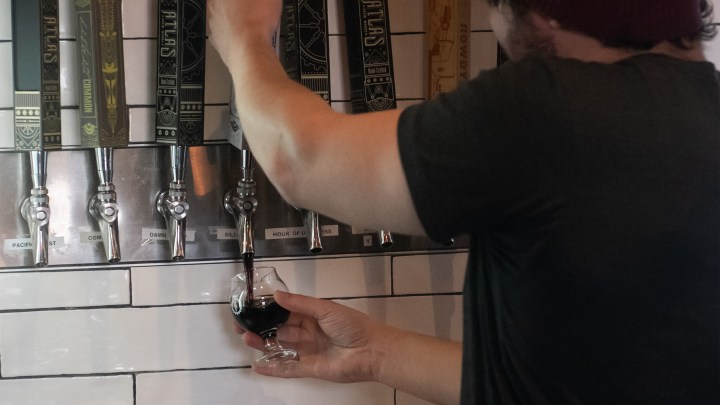
Retail beer sales are up but that’s not cutting it for many craft breweries
Retail beer sales are up but that’s not cutting it for many craft breweries

Before the pandemic shut down its indoor-outdoor taproom, St. Elmo Brewing Company in South Austin sold patrons beers on tap with names like “Carl” and “Norm!”
“We’re looking at a split of probably between 78% to 85% of our sales coming from in-person traffic. So, when social distancing is in place, that 80% just kind of vanishes,” said co-founder Timothy Bullock.
Retail beer sales are up around the country, but that doesn’t help St. Elmo. It doesn’t sell its beer in grocery stores. While the taproom remains closed, St. Elmo is trying a few different things to bring in revenue like selling growlers and four-packs of cans directly to the consumer out of its taproom.
“It’s a middle school dance, like where everybody’s just out on the dance floor and not knowing exactly what to do,” Bullock said.
St. Elmo also recently worked with another local craft brewery, Austin Beerworks, on a limited edition hazy IPA just for the quarantine. St. Elmo’s version was called “Air Five” (like a high five but without slapping hands). And Austin Beerworks’ beer was called “No Touching” (for all those “Arrested Development” fans).
Michael Graham, one of the owners of Austin Beerworks, said about 40% of his brewery’s revenue comes from selling kegs to bars and restaurants. But unlike St. Elmo, Austinites can find Beerworks beer at grocery stores all over town.
“More people are buying beer in the grocery stores and convenience stores, but not nearly enough to make up for that lost volume from bars and restaurants,” Graham said.
The numbers also tend to be more favorable to breweries when selling draft beer.
“One of the things that I think people aren’t aware of is just how dramatically different brewers’ margins are when they’re selling into bars and restaurants versus when they’re selling packaged beer,” said Michael Uhrich, chief economist at the alcoholic beverage consultancy, Seventh Point Analytic Consulting.
Graham and the other Beerworks owners have talked about lowering the price of its beer to move more volume. But playing the price game can be treacherous.
“You might attract new customers, but those are customers who are buying you not just because of the strength of your brand or the beers but also because of the price and so what happens if somebody else comes in at a lower price,” said Bart Watson, chief economist at the Brewers Association.
That value market isn’t really a craft brewers wheelhouse market, either. And most small breweries can’t compete with AB Inbev or MillerCoors on price.
There’s a lot happening in the world. Through it all, Marketplace is here for you.
You rely on Marketplace to break down the world’s events and tell you how it affects you in a fact-based, approachable way. We rely on your financial support to keep making that possible.
Your donation today powers the independent journalism that you rely on. For just $5/month, you can help sustain Marketplace so we can keep reporting on the things that matter to you.












